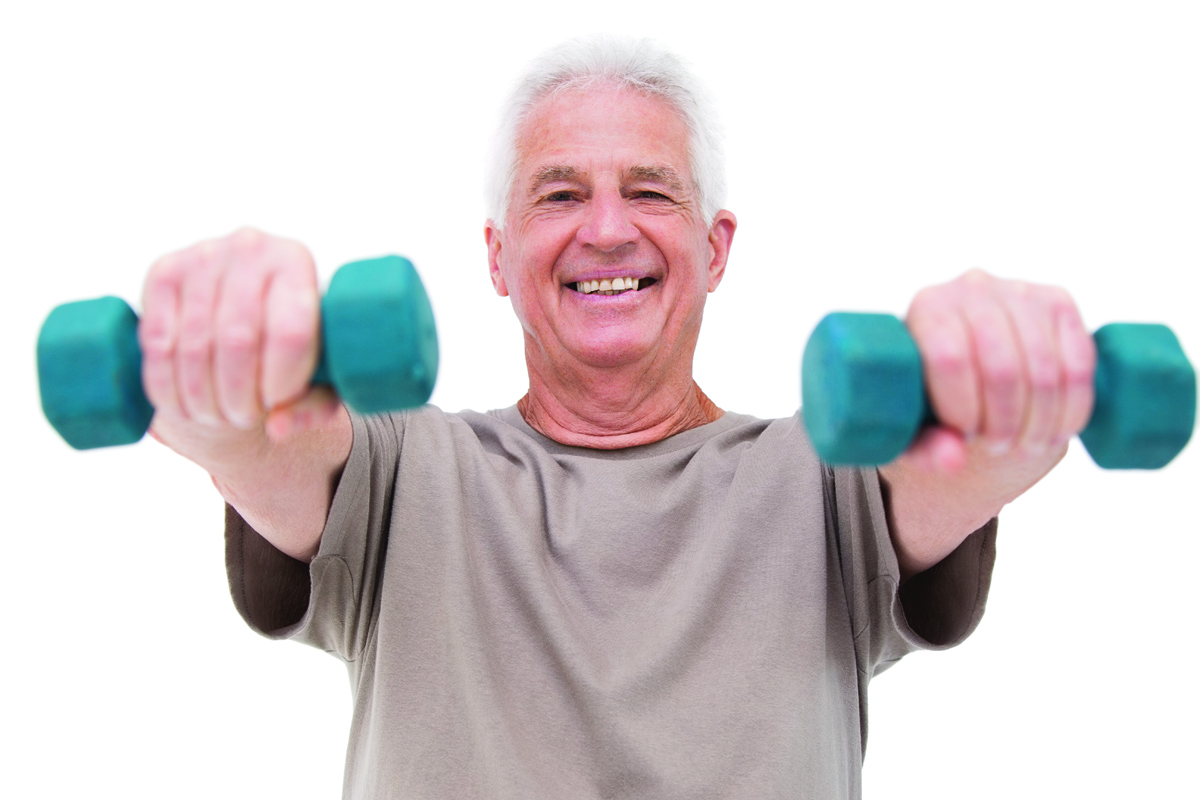
by William C. Logan, Jr., MD, Humana
As a sponsor of the National Senior Games, we’ve heard a lot of inspirational stories at Humana about people who have overcome injuries and illnesses to compete. But you don’t have to be an athlete to benefit from exercise.
Even modest exercise can result in improvements in blood pressure, diabetes, lipid profile, osteoarthritis, osteoporosis and brain function. According to the American Heart Association, people who have a low fitness level are much more likely to die early than people who have achieved even a moderate level of fitness(1). Nevertheless, according to a report by the U.S. Surgeon General on physical activity and health, more than 60 percent of American adults are not regularly active, and 25 percent are not active at all(2).
Some people who have been inactive for too long are afraid to start exercise programs. However, if you’re under the regular care of a primary care physician, there’s nothing to fear and you can benefit from exercise even if you live with a chronic disease, such as heart disease, diabetes or arthritis.
In fact, for some seniors, moderate exercise may be the key to remaining independent. It can also serve as a mood booster.
How do you get started? As the old adage goes, the longest journey begins with a single step.
Seniors should start slowly and, if you have health concerns, first check with your doctor. Upon receiving clearance, slowly begin to incorporate exercise into your daily routine. Some examples include gardening, playing with grandchildren, walking, dancing and even house work.
Then, gradually increase the amount you exercise with the goal of reaching 30 minutes of exercise a day.The exercises mentioned here so far are primarily endurance exercises. Other types of exercises can build strength (light weight lifting), improve balance (standing on one leg or walking heel-to-toe) or increase flexibility (yoga, stretching). Balance and flexibility are particularly important in avoiding falls.
Some of these exercises can be done in a chair or while lying down.
A fitness advisor can provide seniors with recommendations for an exercise regime. That may sound expensive, but it doesn’t have to be. Medicare Advantage plans, like those administered by Humana, may offer an advisor and a gym membership at no cost as part of the plan. For example, health benefits company Humana teams up with Healthways SilverSneakers® to provide Humana Medicare Advantage members with free memberships at participating fitness centers.
Keep in mind that it could take months to go from a sedentary lifestyle to an active one. Additionally, with any kind of exercise, you should always keep safety in mind. This includes wearing comfortable shoes, using appropriate safety gear, avoiding extreme cold or heat, drinking plenty of fluids and breathing deeply.In addition to greater strength, stamina and flexibility, here is another reason to exercise — you may save money on your health care expenses. In a study conducted by SilverSneakers®, participants who visited a fitness center at least twice a week for two years incurred at least $1,252 less in health care costs in the second year than those who visited less than once per week(3).
Finally, don’t forget to exercise your brain along with their body. Brain teasers like crossword puzzles can help keep your minds sharp.
This article was submitted by Humana. For more information on Humana’s senior products in South Carolina call 877-486-2622.
1)http://www.heart.org/HEARTORG/GettingHealthy/PhysicalActivity/StartWalking/Physical-activity-improves-quality-of-life_UCM_307977_Article.jsp
2)http://www.cdc.gov/nccdphp/sgr/npai.htm
3)http://www.cdc.gov/pcd/issues/2008/jan/07_0148.htm



